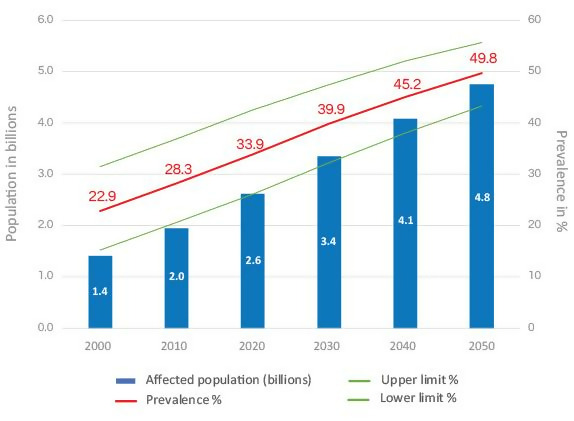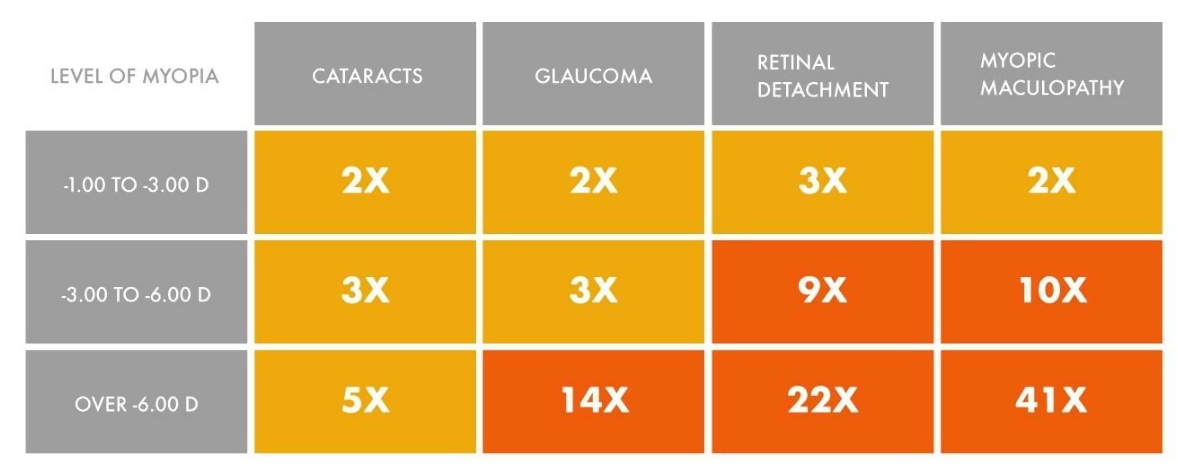The Progressive Myopia Center of Park Ridge Vision is dedicated to protecting vision in patients with myopia, also known as nearsightedness. Research in myopia has made it clear that there is a direct association with blinding eye diseases and higher levels of myopia. There is an enormous amount of information available regarding the options available to slow down the rate of change in patients with myopia. There is constantly new information being published regarding new evidence and options for patients with progressive myopia. Your doctors at The Progressive Myopia Center of Park Ridge Vision will work with you and your child to customize a treatment aimed at successfully slowing down the deterioration related to progressive myopia. Our promise to our patients is to stay vigilant in monitoring your child’s eye and vision health. Our myopia management programs are aimed at taking a proactive approach to protecting your child’s vision for a lifetime with whatever tools that we have available now and in the future. Please contact our practice with any questions that you may have about or progressive approach to progressive myopia!
Myopia (nearsighted) is a condition that results in blurred distance vision. This condition is becoming more common among children. The research is showing that children are developing myopia at earlier ages which leads to higher levels of myopia as the condition progresses through the late teen years. Myopia is the result of light focusing incorrectly inside of the eye. Rather than focusing light onto the retina, the center of focus becomes the space in front of the retina. Myopia is often the result of an eye that has grown too long.
Sometimes Myopia is referred to as “nearsightedness”, because objects at near distances are easier to see relative to objects at far distances. This disorder generally develops in childhood and increases through adulthood, if nothing is done. There are people that will experience adult onset myopia and it is common in adults who change their viewing habits. Examples include starting law or medical school, taking a job that requires looking at a screen for extended periods of time or even being on a submarine. Some common signs and symptoms of Myopia in children are squinting, getting close to objects (such as the TV), holding objects closer than expected, eye fatigue, and eye rubbing.
2.3 billion people have myopia currently, and if nothing is done about it, that number is expected to reach 5 billion by 2050. (According to researchers at the BH Vision Institute.)

Graph credit: The Brian Holden Vision Institute
The number we are most impressed by? One. The one child that we are in front of.
Our concern with myopia is not just the number in the glasses prescription. Our concern is the increased lifetime prevalence of serious eye conditions that occurs with every higher level of myopia.

The lower your child’s prescription, the lower the risk for serious conditions.
Our team of experts will work with you and your child to customize a treatment plan to address your child’s myopia. By working together, you can rest assured that we are doing whatever we can to safely reduce the deterioration of your child’s myopia.
What is performed at a Myopia Evaluation?
We perform myopia management diagnostic evaluations that measure aspects of myopia that is not considered during a routine eye examination:
-
- Optical biometry: A highly accurate, non-invasive automated method for measuring the anatomical characteristics of the eye. The accuracy of optical biometry, and in particular the IOLMaster® from ZEISS which is used exclusively at Park Ridge Vision, has been extensively confirmed across a wide range of scientific studies.
- Binocular Vision: Risk factors for progressive myopia include eye teaming measurements, especially the presence of esophoria at near. Esophoria at near distances are associated with higher risk of progression and potentially is influenced by accommodation. Certain treatment options impact binocular vision.
- Accommodation: Risk factors for onset and progression of myopia has been shown to be associated with accommodative accuracy and the Accommodative Convergence to Accommodation status (AC/A). Additionally certain treatment options impact accommodation.
- Pupillary dynamics: Certain treatments are influenced by pupil dynamics or the treatment itself can influence pupillary function.
- We suggest the most appropriate interventions based upon individual needs and keep abreast of the latest science related to myopia management. Your doctor will review all of your options at the Myopia Evaluation to help slow down the progression of myopia in your child.
Currently there are three research proven methods available in the US that are implemented as myopia management programs in our practice. These include:
Corneal Reshaping Therapy (CRT)
CRT lenses provide clear vision all day without the need for glasses or daytime contact lenses! CRT are specialized contact lenses worn at night while sleeping. These FDA approved lenses are safe to use in children and adults. The lens gently reshapes the cornea overnight and are removed upon wakening. Research has shown that CRT lenses can slow the progression of myopia at approximately 45-50%!
Specialty Contact Lenses (SCL’s)
Specialty contact lenses are an option to slow down the progression of myopia. With an effective range of 35-50% these day time wear lenses are a great option for children. Our doctors are experts in fitting the latest technology of SCL’s, that have been shown to be highly effective at slowing the progression of myopia as shared in this article.
Atropine Eye Drops
Atropine eye drops have been investigated for decades in its role for reducing myopia progression. At its full concentration Atropine drops have been proven to be effective at slowing the progression of myopia. But at the full concentration the drop causes significant blurred vision and light sensitivity. Researchers have been working to find a concentration that minimizes the negative side effects while maintaining the effectiveness of myopia control. Our doctors will work with you and your child to determine if she/he is an appropriate candidate for atropine eye drops.
Dr. Press authored an article educating eye doctors on the latest developments in managing myopia:
https://www.reviewofoptometry.com/article/ro0218-myopia-management-in-action
Dr. Press’s article educating eye doctors on myopia and technology:
https://reviewofmm.com/myopia-management-and-technology/
Dr. Press’s lecture to other eye doctors on managing myopia:


